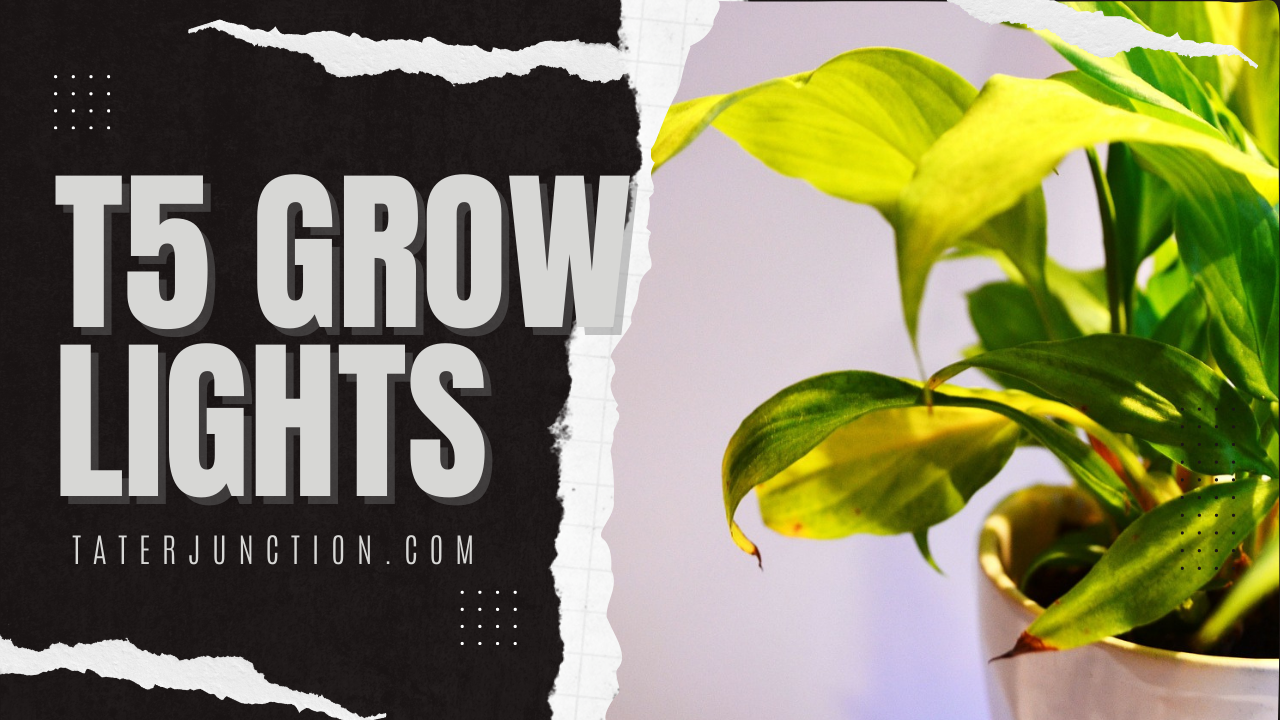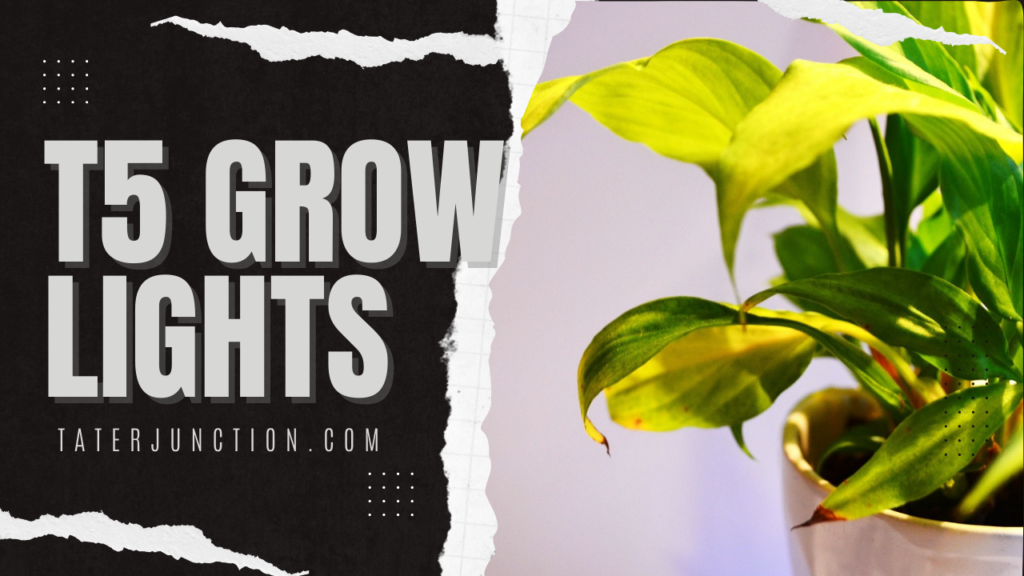T5 grow lights come in many different styles. Two- or four-foot T5 lights are the most common, with one, two, four or six bulbs in each. These models are great for small plants, but bigger ones need a bigger pot. If you want to save money, look into T5 fixtures that are plug and play. This is a list with some of the good and bad things about T5 lights.
T5 bulbs have a longer life than other LED or fluorescent bulbs, so they are better for your home. A typical T5 bulb lasts about six to seven years before it needs to be changed. T5s also last longer than LEDs, which can be very pricey. If you’re growing plants for medicinal or recreational use, think about T5s. They give off the most light and are the cheapest option. Besides high intensity discharge (HID) and low intensity discharge (HID), you can choose grow lights.
When you choose a grow light, think about what you like. If you need a lot of light for flowering, you might want to try a high intensity discharge lamp. These lights are usually more expensive, but they can give off a wider range of light. The reason why this is so is that they’re good for both vegetative and flowering growth. In a large indoor grow room, they’re good to have around. Whether you choose T5 lights or high-intensity discharge lights, you need to think about your own needs before you buy them.
T5 lights have more brightness, which is important during the vegetative growth phase. Because photosynthesis increases during these times, more light is needed for the best growth of plants. It can’t be done with T8s because they can’t be fixed to make the veg or flower phases brighter. The T5s are a good choice for growing plants in your house. You should use high-output lights if you want to get the most out of your grow space.
Make sure that when you choose T5 grow lights, you think about the temperature and wavelengths of the light that they give off. The light bulb for T5 bulbs should be 6,500K. The T5s are used to grow seedlings, microgreens, and fruits, as well as to grow other plants. The white T5s will also be useful for spreading the word about the plants. Another thing: They are also very durable. They can also help start new plants. As a grower, you can start with this.
If you’re growing plants inside, a T5 grow light is the best choice for most people. It costs less to run T5 lights, but they are more powerful. If you put a T5 grow light in the same environment as a CMH, it won’t have the same effect on your plants. But it will produce more light than a CMH or LED. There is a T5 tube that is smaller and can be placed near the plants. The size of the T5 light fixture will determine how much light the plant needs.
When it comes to growing plants, LED lights are better for many people. However, they can be pricey and may not be the best option for many hobbyists. For small plants and seedlings, T5s are still a good choice, because they don’t heat up. They’re also cheaper than LEDs, and they use less energy than most incandescent bulbs do. Choosing a T5 fixture is important because you want to make sure that it fits your style as you grow up.
They come in different sizes. Most T5 bulbs have a diameter of 5/8 inches. There are other types of bulbs that can be bought. A T5 light is best if you want to grow plants that need blue or green light. It should be six to eight inches above the plant and have red or green bulbs at the bottom. This will help the plants take in more light, which will help them grow.
When you buy T5 grow lights, make sure you read the label and look at the prices. If you buy T5 grow lights for less money, they may be more powerful and last longer than other types of lights. You can use T5s to grow a wide range of plants, including herbs, and you can even grow them indoors and outside. T5s are great for people who have small places.
Sunlight and Grow Lights: Greenhouse Extra Lighting
In greenhouse farming, how important is extra lighting, and what are its main benefits?
Supplemental greenhouse lighting is now an important part of gardening outside. It allows farmers to keep growing crops even when the days are short and the weather is bad. By having a steady source of light in the greenhouse, they can do this. Combining sunlight with extra lighting cuts production costs by a lot. During the day, when sunlight is the brightest, each light isn’t running at full power. Greenhouse lighting grids, on the other hand, spread lights out a lot more than in the dark. With less energy and a bigger area covered, the lights cost less per square foot of canopy.
Light can pass through the glass of a greenhouse.
To get your grow room going, you might need to buy a whole set of grow lights. These systems are made to fit your space and garden needs, and they provide the best artificial sunlight for your plants to grow. This is how it works: Our models, which range from the tried-and-true to the cutting-edge, will help your garden for a long time. We have a lot of different light bulbs and lamps if you want to change your system or replace your old lighting. Because the bulbs you choose for your grow room are the source of your plants’ growth, we have the best options.
When You Buy a Grow Light, what to look for
Climate change is making it hard to get enough food for our growing population. However, technology is trying to solve most of the problems that the agricultural industry is having in order to make more food. Sunlight was the main source of energy for photosynthesis in the past, but it hasn’t been able to keep up with the growing need for food. People now want to know which is better: led grow lights or sunshine.
When I first looked for grow light shelf units for growing seeds indoors, I quickly found out that they were way out of my price range. A three-shelf unit with lights cost a lot of money at the time. It’s expected to cost about $600 in 2022. There are three levels of lights in this three-tier grow light kit from gardener supply. If you can afford to spend more money, this is a dream come true!
Explanation of why the Far Red Light is used for flowering.
High pressure sodium grow lights are used all the way through the growing process, but they are especially popular when the plants are blooming or putting on fruit. They give off a lot of red and orange light, which plants use a lot in the last stages of their lives. More: hps bulbs are explained and reviewed.
It is possible to use any led light as a grow light. Because of this, some work better when the cannabis plant is at a certain point in its growth. Regular 150 watt led white light bulbs could be used to grow a small cannabis plant in its early stages. As the cannabis plant grows, its need for light will change. “As the plant gets bigger and matures into the blooming stage of its life, it needs a lot more light and a lot more space to grow.” When you need to get the job done right with high-power, purpose-built grow lights, that’s when they come in.
Season: Light and Plant Growth.
Garden seedlings are in love with led lights. Cold, full-spectrum light is what seeds need to grow well. Young plants get a head start before they have to fight the weather outside during the growth season. As a result, healthy seedlings lead to faster plant growth and higher yields later on. Another thing to keep in mind is that led lights are very close to the shelf. This means that you’ll have a lot more space for multiple seed trays, even if you have limited space to grow.
People who grow plants in a greenhouse need more than just water and soil to get a good harvest. A good amount of lighting is also important. Growers often make the mistake of installing a lot of hps lights and putting them close to their plants. HPS lights make a lot of heat. Also, the lamp near the plant could burn the leaves. Led grow lighting is one of the most promising ways to add extra lighting to greenhouses, so let’s take a closer look at it. This is because these lamps have a lot of advantages over other types of lights, and also because this is the new stage in horticulture lighting.
This article inspired by The Pros and Cons of T5 Grow Lights at 66th London.



No responses yet